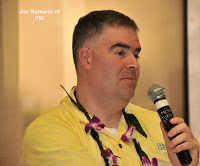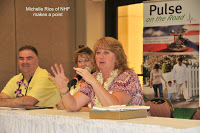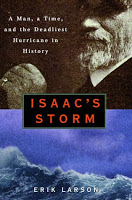Timeless Advice on Healthcare Insurance
When Goliath
Insured David: How to Get What You Need When the Giant Doesn’t Listen
James Lynch
same insurance plan for several years. How do I make sure I don’t get any
unpleasant surprises in January?
healthcare system can be extremely difficult, and sometimes a downright
nightmare. Unfortunately, our community’s size—or lack thereof—puts us in a
vulnerable position; there simply isn’t enough education or understanding about
our needs, and this happens on the medical side (hematologists and nurses) as
well as on the business side (insurance and reimbursement specialists).
severe hemophilia A. In early 2014 I needed a new insurance plan. I’d moved
from New York to California. I didn’t know much about the healthcare culture in
California, so I contacted a navigator—a person trained to assist people
seeking health coverage through the Affordable Care Act’s Marketplace. I knew
she’d worked in hemophilia, and thought her expertise would help me select a
plan. She pointed me toward a plan with Sanitas Healthcare*, and I enrolled.
Healthcare works differently than most health insurance companies. For one,
it’s not just a health insurance company; it’s an integrated delivery system
(IDS), a network of healthcare organizations operating under one umbrella. The
IDS model is one example of a managed care system that’s grown more popular in
recent years as a means of making healthcare coverage cost-effective for the
insurance provider. Sanitas is not only a health insurance provider, but the
company owns the hospitals its patients must visit under their plans, employs
the doctors its patients can see, and controls the pharmacies where its
patients receive medication. In lay terms, Sanitas controls everything. It’s
gigantic, with over 9 million patients across eight states plus Washington, DC.
Sanitas has over 174,000 employees, and in 2013, it reported $53.1 billion in
revenue. Yup, billion. Sanitas is the
largest managed care organization in the United States.
with Sanitas I felt safe. Unfortunately, Sanitas turned out to be a terrible selection
for someone with hemophilia, especially an adult patient—something my navigator
friend was not aware of because she’d worked in pediatrics.
from Member Services. I was told I was unable to schedule an appointment for the
first five weeks following registration. This included not being able to order
factor until a Sanitas doctor wrote me a new prescription. Multiple customer
services agents confirmed that there was no way around this protocol. Yet I
found out later from a Sanitas executive that what I’d been told directly
contradicted company policy: new patients are
able to fill an active script from another doctor when they first enroll with
Sanitas to ensure continuity of care.
these five weeks, I made numerous phone calls to Member Services; I was
repeatedly disconnected, shuffled through a seemingly endless phone tree, or
left voicemails that were never responded to.
finally able to make appointments, I was told by Member Services that in order
to see a hematologist, I first needed a referral from a primacy care physician
(PCP). I argued that I have hemophilia, a chronic bleeding disorder, and have
records from a PCP visit within the last six months. This argument was
fruitless; I had to see a PCP first. Later, I again learned that this is not
Sanitas policy.
the PCP, I learned it would be at least another week until I could see the
hematologist, and then another five days until the factor prescription written
by this hematologist would be ready at the pharmacy. I asked if the PCP would
write my prescription, but he wasn’t comfortable with that. When I stressed
that I was running out, he wrote a “holdover prescription” for one week’s
supply.
later—because I’d already been told many times that Sanitas didn’t provide home
delivery—the pharmacy could not find my factor. One pharmacy employee actually
said, “We lost it.” I was shocked, but because the hematologist appointment was
only a few days away, I decided to wait. My supply continued to dwindle.
hematologist appointment, I found myself in the role of teacher, explaining
microbleeds, trough levels, and so on. The hematologist repeated many of the
same procedures the PCP had done, checking my blood pressure and heart rate He
didn’t measure or closely examine my joints. For a company that prides itself
on its data, I was surprised that this hematologist didn’t measure anything. As
the appointment ended, I received my full prescription for factor.
a pharmacy employee called. She had my factor, but she said that because my
policy expired on March 31, 2014, she would not release it. I told her she was
incorrect because my policy didn’t even begin until April 1, 2014. She
forwarded me to Member Services. After the phone rang for a solid five
minutes—I’m not exaggerating; I timed it—I was disconnected.
I made over 50 calls, spent over 400 minutes on the phone, and spoke to dozens
of employees who gave me incorrect information about Sanitas’s policy regarding
newly enrolled patients, receiving chronic medication, home delivery options,
the ability to see a specialist for a chronic condition, my account status, and
my payment records.
became clear that I needed to take more aggressive action, I had detailed
notes. I wrote a pointed, aggressive, but professional open letter to Sanitas
and posted it on my Stop the Bleeding! Facebook page, then shared the post on
my Twitter account and with my email list. In less than 72 hours, my letter
received over 8,000 unique reads. A senior staff member at Sanitas contacted
me, and I requested an in-person meeting with various senior staff to discuss
the litany of problems I had experienced.
was granted. I met with the medical director, pharmacy director, COO of
clinical operations, and head of hematology/oncology. It was a semi-productive
meeting. The senior staff heard my complaints and informed me of changes they’d
already made to their “onboarding” new-patient enrollment process to better
account for new patients with chronic diseases. The pharmacy director changed
certain internal policies and implemented some education for her staff as a
result of my complaints. She also agreed to put in writing that home delivery
of factor for people with hemophilia was available on request. On the clinical
side, I insisted that the overall quality of care was nowhere close to that
offered by an integrated comprehensive care model such as an HTC, but it was
clear they weren’t interested in making clinical changes. Instead, they
insisted that the comprehensive care they offer is on par with an HTC’s. When I
insisted that the care was simply not equal, they agreed to “look into it,” but
nothing ever came of that.
a tremendous amount of attention from Sanitas. Clearly, I’m the “problem child”
and receive white-glove treatment so I don’t cause any more PR headaches. Many
flaws remain in Sanitas’s system for people with rare, chronic conditions, not
the least of which is uninformed Member Services reps who are often the first
contact for new patients. Fortunately, a focused effort is being led by two
strong advocates in our bleeding disorder community who are collecting stories
and organizing an action plan to effect reform at Sanitas.
five guidelines everyone with a bleeding disorder should follow when engaging a
new healthcare company or medical service provider:
You are the expert. It can be tempting to
relinquish control and responsibility to an authority figure such as a doctor
or pharmacy director, but you can’t afford to. You must be an expert on
yourself. It’s your body. It’s your life. Own it, take responsibility for it,
and fight for what it needs.
Log everything. Many large companies and
institutions have myriad people who answer phones or respond to emails; these
people often work with minimal information, minimal accountability, and minimal
incentive to go beyond the basic call of duty. Keep track of everything: names,
dates, times, badge numbers—even the simple act of asking reps for this
information subtly informs them that you are to be taken seriously, and if
needed, you’ll have a record of your experience.
Follow up again. And again. And again.
Unfortunately, people don’t always say or do what they claim they will. Keep at
them. Don’t allow uninformed or unmotivated employees to compromise your
healthcare. Keep to your agenda until you receive the positive outcome you
deserve.
Use our community. The bleeding disorder
community is lucky to have empowered and educated advocates. I was overwhelmed
by the number of people who offered to help me during my crisis. In this
community, when you reach out, people will reach back. Don’t be ashamed to ask
questions and ask for help. We’re here for each other. We are each other’s
rock.
Stay positive and solutions-driven. No matter
how noble the fight, nobody likes a rude, angry, or unprofessional fighter.
It’s important to be assertive, aggressive, and diligent, but it’s unacceptable
to be cruel or to behave inappropriately. If the system is broken, point out
the flaws, and offer what you can to help fix it. We can’t view these companies
and their staff as enemies; they’re not! They’re our allies. But a lack of
adequate education coupled with laziness, defensiveness, or irresponsibility
can create catastrophe.
eye-opening, but I knew my own personalized healthcare needs, documented
everything, stood my ground, and was able to articulate my needs to the
company’s executives. Being your own advocate is not an easy process, but it’s
manageable, empowering, and necessary. Always keep in mind that advocating for
yourself is also advocating on behalf of everyone in our community.
co-founder and president of the digital content agency Believe Limited, through
which he created and produces the award-winning hemophilia comedy series Stop
The Bleeding! (stbhemo.com) and the inspirational speaker series Powering
Through poweringthrough.org). He’s the 2013 recipient of HFA’s Terry Lamb Award and the 2014 recipient of NHF’s Loras Goedken Award. He
lives in Los Angeles, California. Read an in-depth account of his experience at
patrickjamslynch.com.
has been changed for anonymity.


















